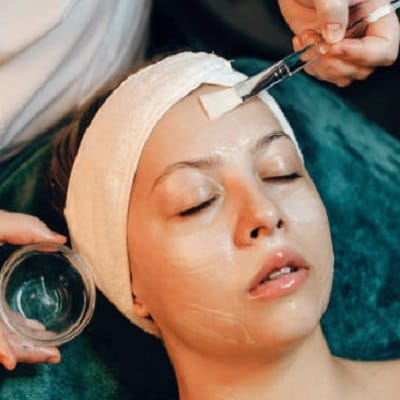
Chemical peels are one of the facial treatments that enhance skin texture by shedding off dead skin, among other benefits. They can assist in several problems like acne scars, fine lines, facial wrinkles, and hyper-pigmentation-based skin problems. Learning about the number of sessions required for the chemical peels is equally crucial in enhancing the outcomes. This is especially helpful in managing expectations and planning for the necessary number of sessions to treat the skin ailment. It also assures the patient of the expected costs that may be incurred during the treatment and the time it may take.
What Determines the Number of Sessions?
Chemical peeling involves removing the outer layer of the skin and revealing a new and smooth skin surface.
Hormonal changes and hormonal factors also influence skin type and condition. For instance, persons with sensitive skin may need fewer sessions and longer intervals between sessions to avoid scratching the skin.
The number of treatments is affected by the desired results. If you think of even marginal changes, fewer may just be enough for you to succeed. However, individuals with deeper skin, that is, bad skin, such as bad acne scars or deep wrinkles, may need more treatments.
Further, the professional opinion of a dermatologist who examines the skin conditions will determine the number of required sessions.
Types of Chemical Peels:
Chemical peels include the superficial, medium, and deep.
- The superficial peels are the least invasive and affect only the epidermis layer of the skin.
- Medium peels are more profound than the earlier ones. They treat various problems, such as age spots and fine lines, but the recovery time is longer.
- Deep peels act on the dermis and are employed for severe skin conditions. They require a longer period of recovery and a more exhaustive procedure.
Each type differs in the penetration level and the duration of downtime, factors which determine the choice depending on the skin condition and healing capacity.
The Process of Chemical Peels:
- It involves washing the skin to remove any oil or debris on the skin’s surface.
- Then, a chemical solution is used to treat the skin.
- This solution results in scabs on the skin surface and dead skin peeling off in the following days.
- It is not painful, but may have a tingling or burning aftereffect for the patient after the treatment is complete.
- For each peel, the sensation and complete recovery time can also differ.
Factors Influencing the Number of Sessions:
The severity of skin issues
The depth of your skin damage is another consideration that dictates the number of chemical peel treatments you would require. Light skin problems would require several sessions, while major problems such as deep wrinkles, large scars, or spots would require more sessions.
Reaction to initial peel
Another key factor is how well your skin tolerates the first peel; if this is not an issue, the dermatologist may advise more sessions. Sensitive skin varies from individual to individual, and remedies can also be used depending on the skin’s tolerance to certain treatments.
Interval Between Sessions:
Generally, the interval between chemical peels is between two weeks and three months depending on the type of peel done and the skin.
Meanwhile, superficial peels can be done more frequently and the interval between the treatments is usually 4-6 weeks.
Medium peels would take between 3-6 months after the session, while deep peels are carried out and could last many years.
Combining Chemical Peels with Other Treatments:
Chemical peels are combined with other treatments to improve their effectiveness in the skin care process. Therapies, including microdermabrasion, laser treatment or micropigmentation,, may be used alongside chemical peels because they have distinct effects on skin levels or conditions. Nevertheless, the important point is the temporal relationship and coordination of these treatments so as not to harm the skin with excessive stimulation. If it is possible to consult a skin specialist or dermatologist, they can assist in the idea of an effective skincare regimen without causing adverse effects to the skin.
Risks and Side Effects:
- Redness and Irritation
- Swelling
- Peeling and Flaking
- Changes in Skin Color
- Infection
- Scarring
Cost of Chemical Peels in Islamabad:
The chemical peel treatment cost may vary from PKR 15,000 to PKR 30,000 in Islamabad. It depends on the nature of the sessions and the number of sessions you want. Superficial peels are usually the least costly, while deep peels cost more and are more challenging due to their severity.
Consultation:
Knowing factors such as skin type, treatment desires, and possible harms is useful when deciding on skincare. If you only have specific skin concerns, a dermatologist at SKN Cosmetics will give a specific diagnosis and recommendation. This way, you can be sure that you get the best results from your chemical peels, which will result in healthier and glowing skin.



